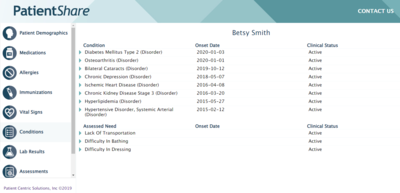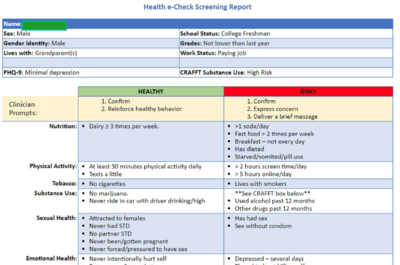CDS Hooks Services
CDS hooks is now offered by most EMRs as a means to connect external functionality through FHIR APIs. The CDS hooks specification defines a series of 'hooks' which provide information, or access to a SMART application, within a user's standard workflow. CDS stands for Clinical Decision Support. In the most straightforward use case, a SMART app could access FHIR-based patient data and apply unique decision support logic, making the result available to the attending physician.
The Lush Group participated in the early CDS-hooks Argonaut projects and has created two services which demonstrate how this technology could be used to extend interoperability.
Health e-Check Adolescent Preventive Screening Report
Health e-Check is an Adolescent Heath Behavior/Emotional Screening Tool which is used in the clinician’s office immediately before an adolescent visit. The screening report is available to the clinician from the clinician’s EHR. The EHR presents 'cards' describing the available information and a link to specific report for the selected patient. This screening report was designed to help clinicians identify risky behaviors and provide counseling for a range of adolescent behavioral and emotional health risks, including substance use.
Health e-Check is owned by the University of California, SF and was developed with funding from the Agency for Healthcare Research and Quality (AHRQ) through a grant to PI Elizabeth M. Ozer, Ph.D.
This CDS-service was developed by The Lush Group to demonstrate a method to efficiently deliver these results to the physician during the patient visit.
PatientShare External Clinical Records

PatientShare is a FHIR-based system that allows patients to control who has access to their health data, using the HEART profiles. The patient can choose to share their clinical data with a specific physician. This CDS-hooks service is a demonstration of how a physician could access clinical records from external systems, from within their EMR. There are countless use cases when a patient sees a new physician, and that patient's clinical data is not available. This demonstrates one patient directed approach to solve that problem.


